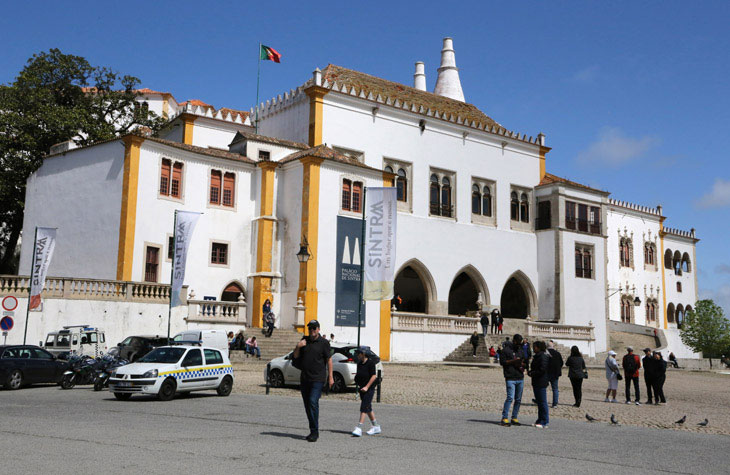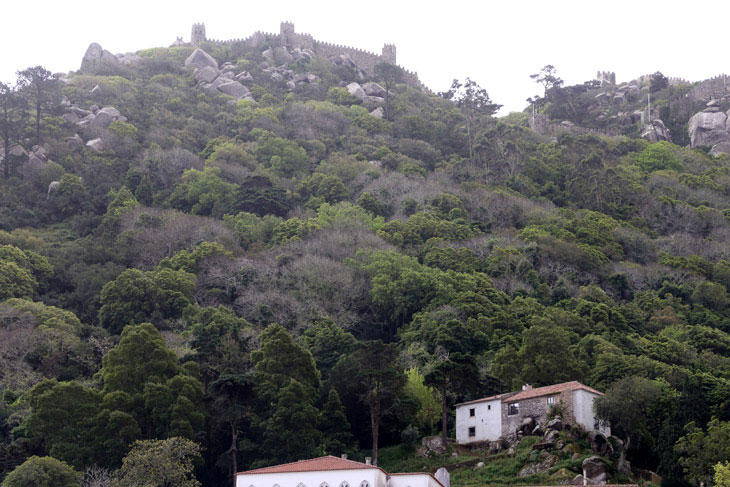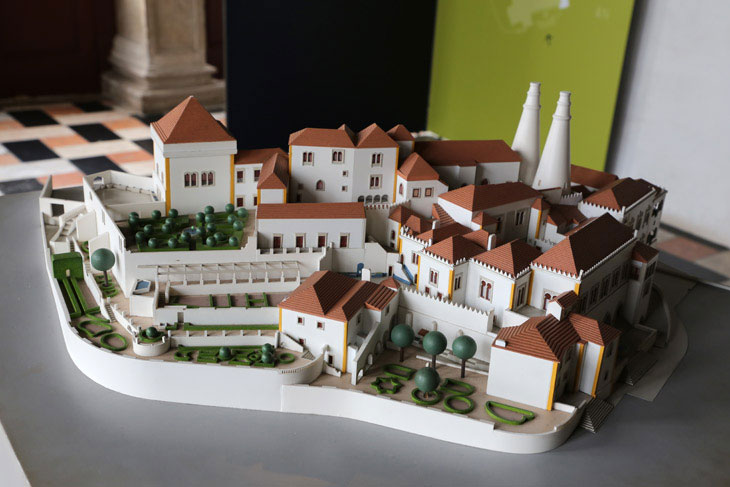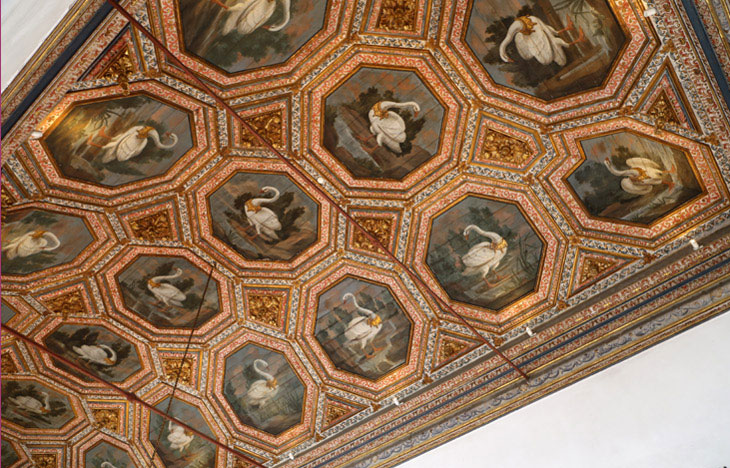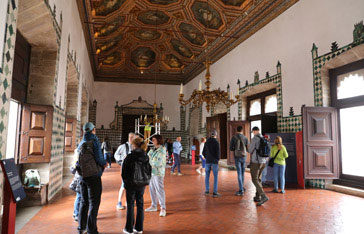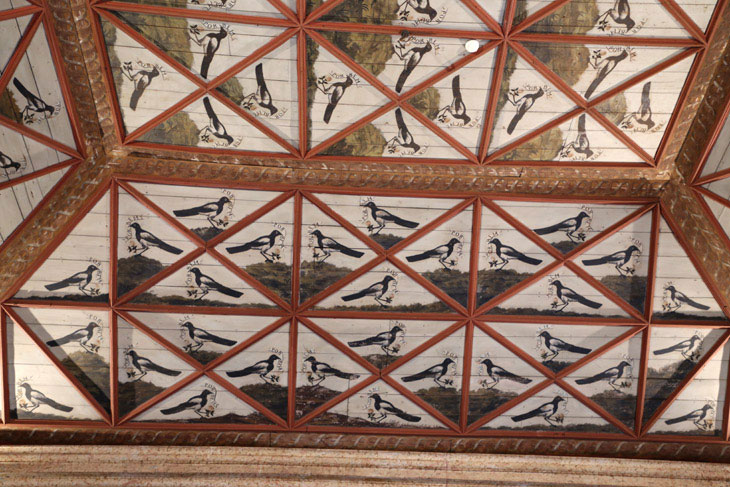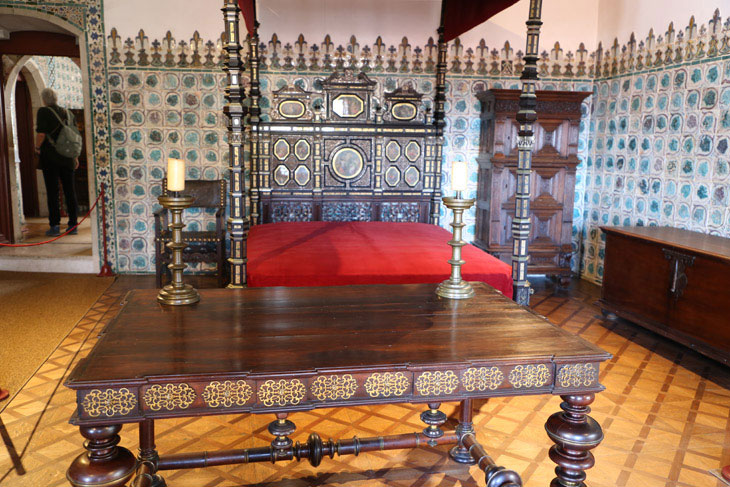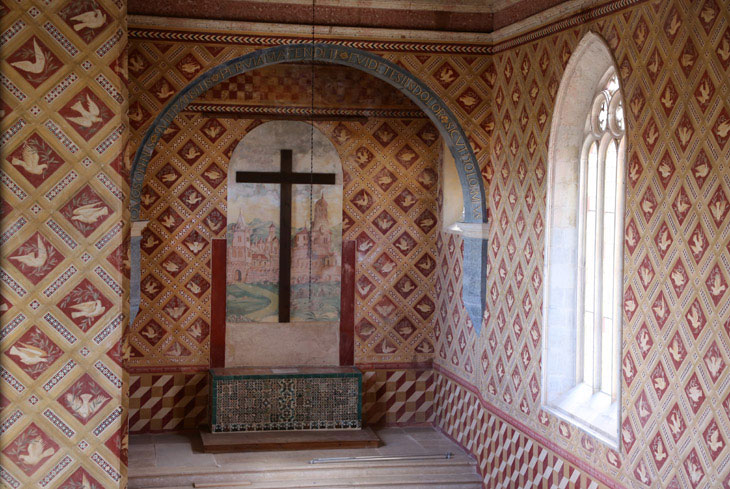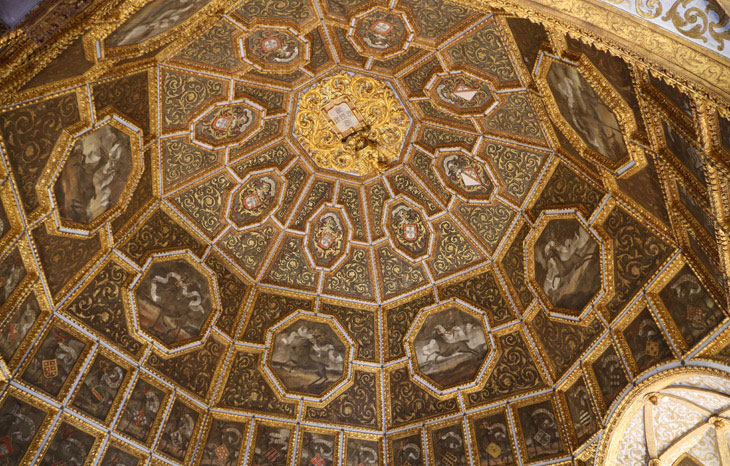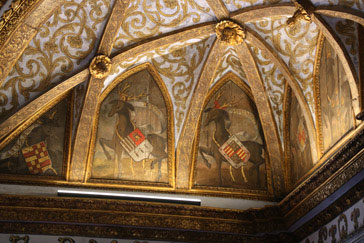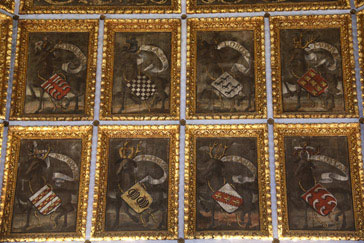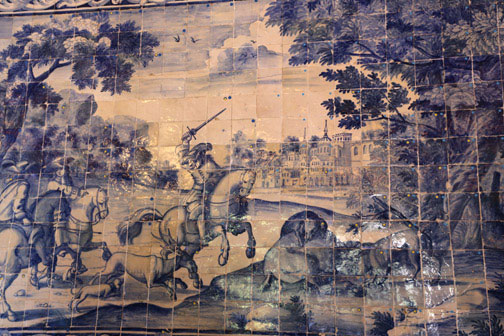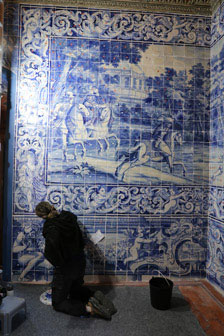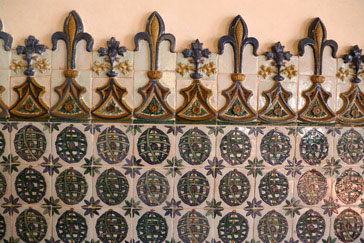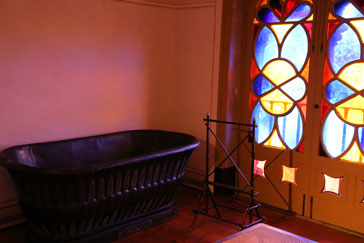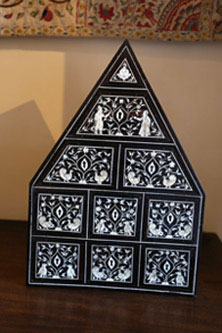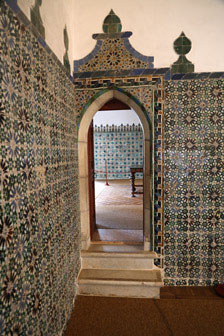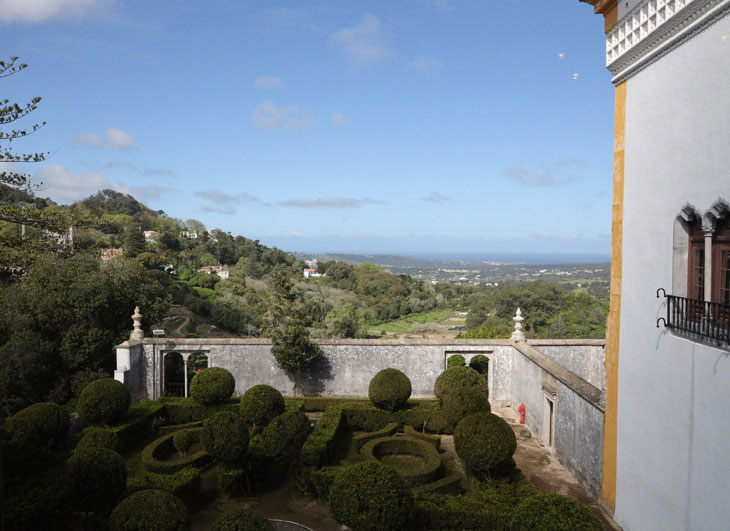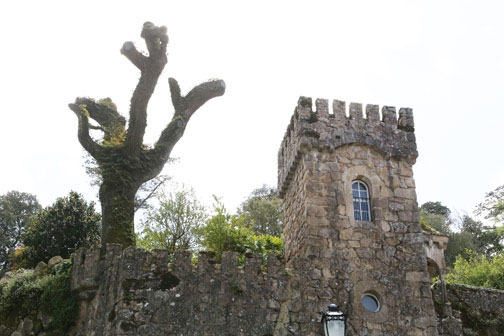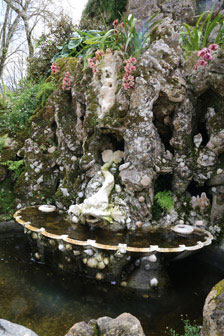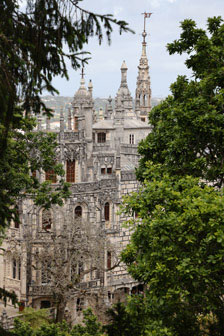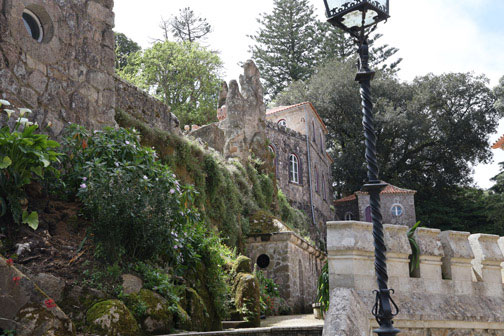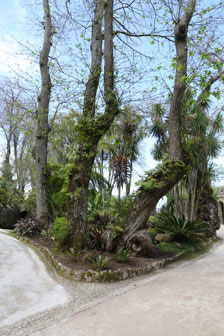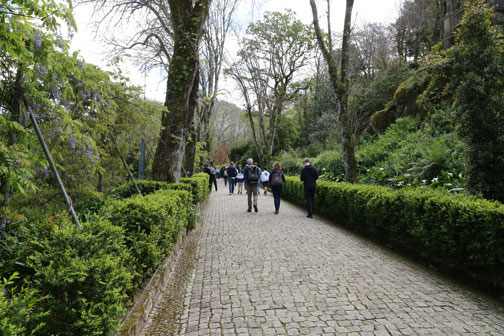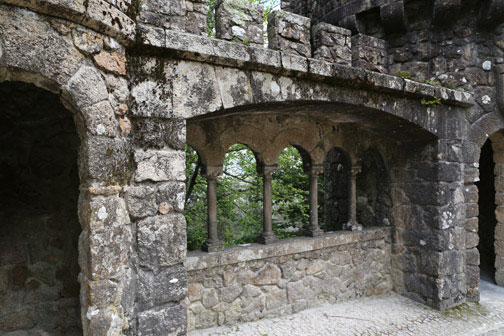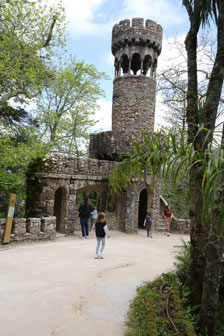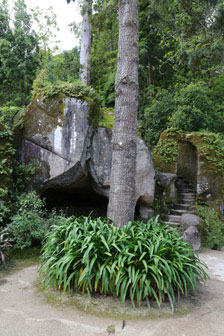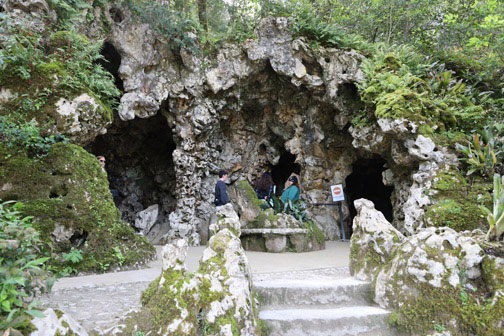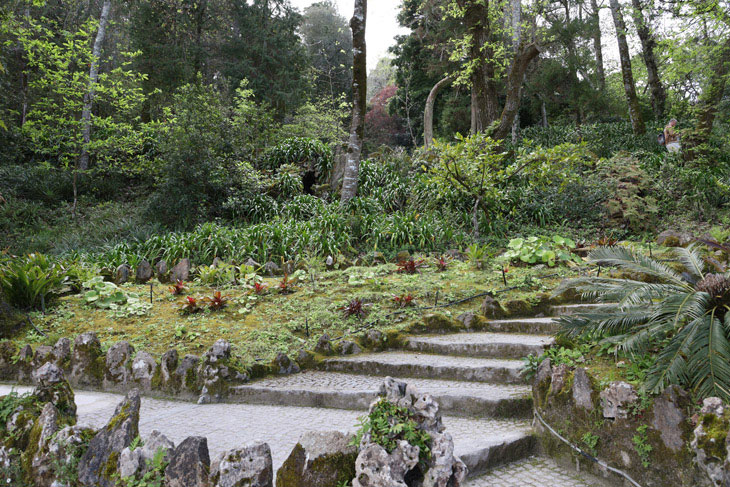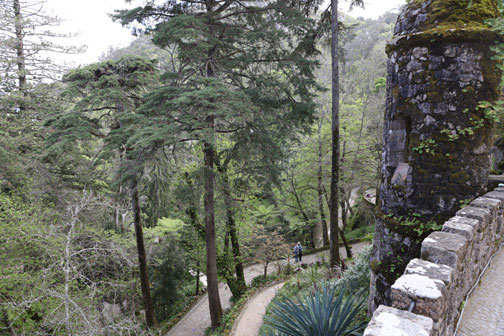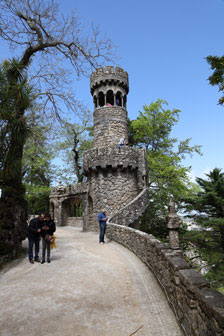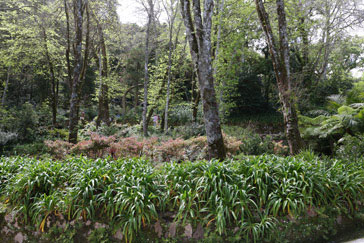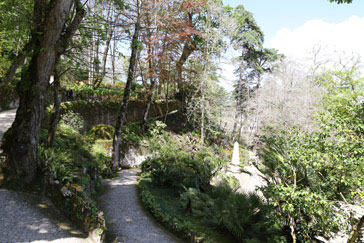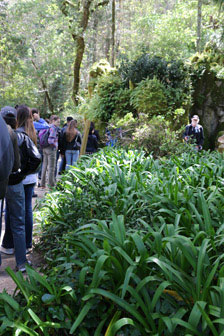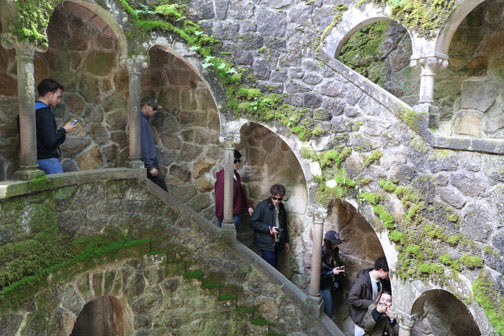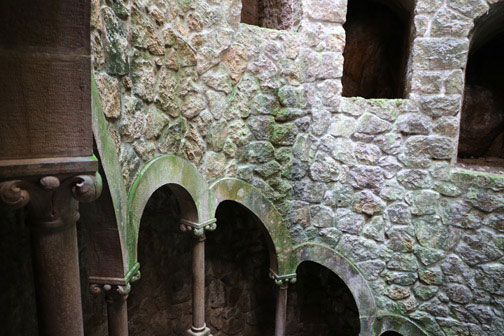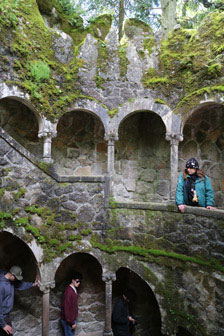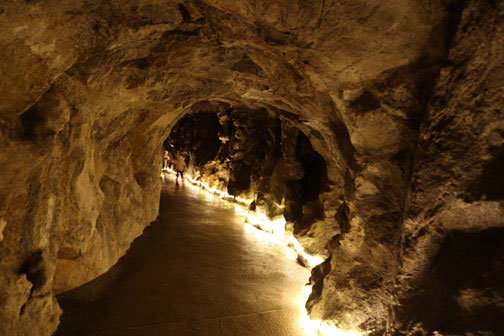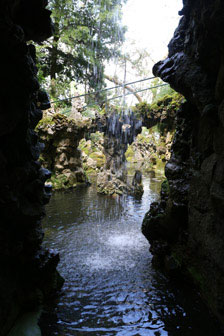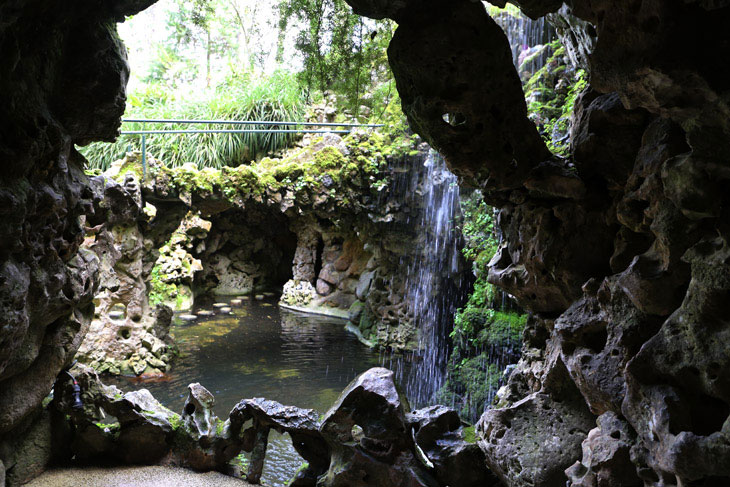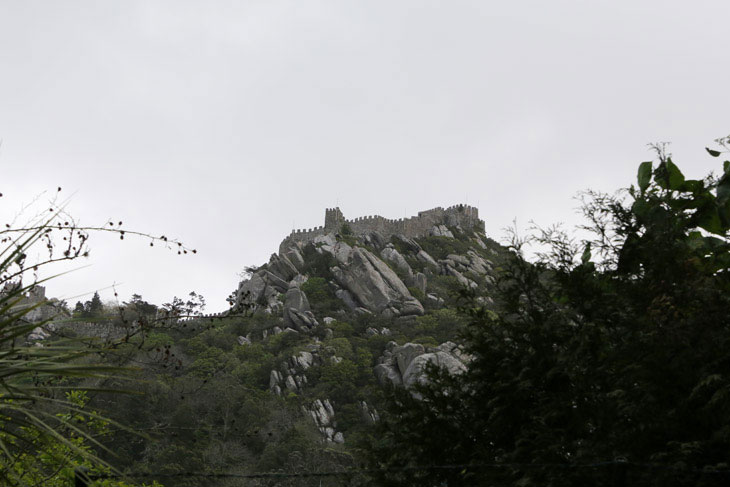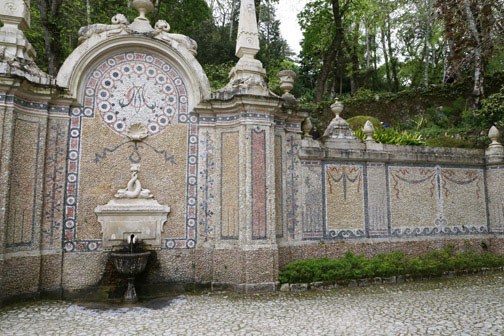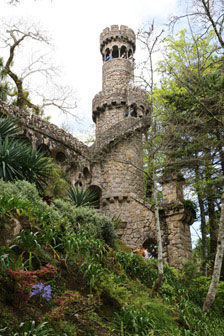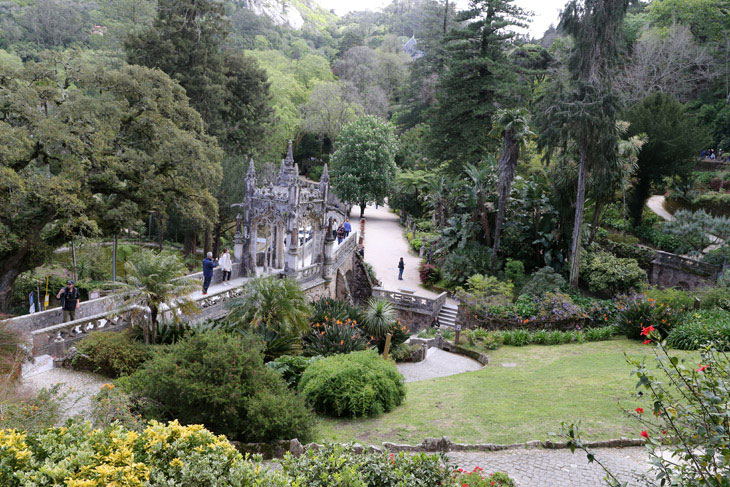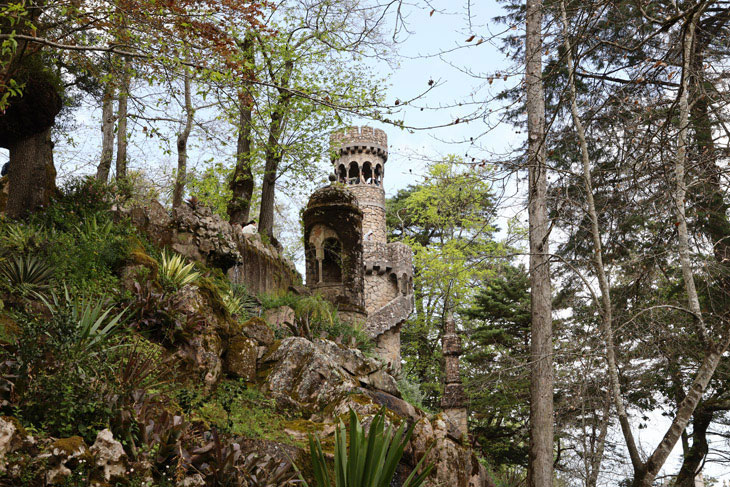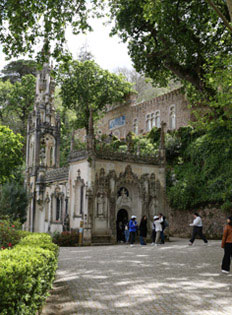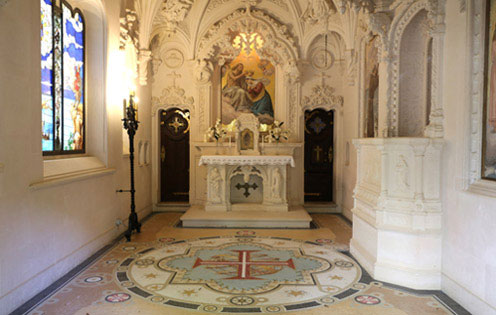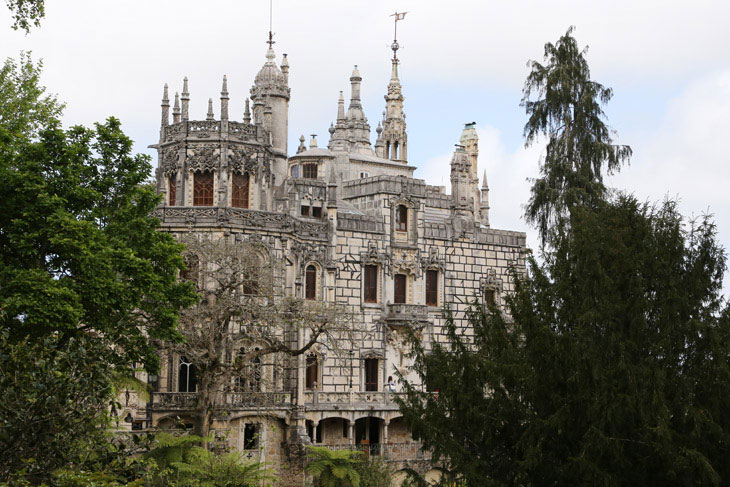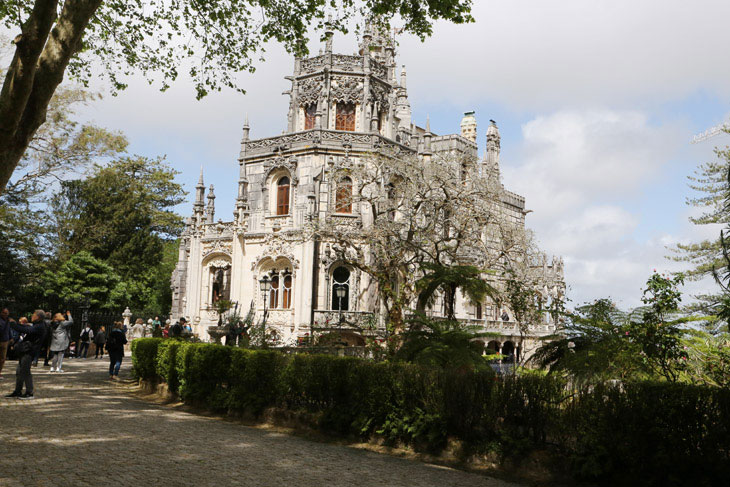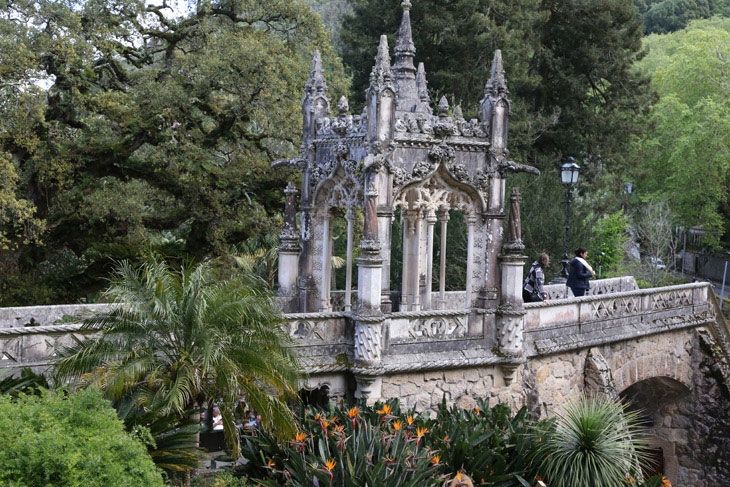Childhood Dreams
Sintra - The National Palace of Sintra and Quinta da Regaleira
We arrived in Sintra one morning near the end of our visit to Portugal eager to see three more of the many
places of interest in the town. Our research led us to believe that the 435 bus would take us everywhere we
we wanted to go. The challenge was to find the elusive bus stop. The tourist-oriented web page we consulted
advised us to "Just keep walking past the entrance to the station, and you’ll see the stop down on a sloping
road." We did find something that looked like a bus stop, but there were no signs indicating which buses, if
any, actually stopped there.
We could see The National Palace of Sintra, and it looked tantalizingly close, so we decided to walk to it.
We would probably find a bus stop there easily after our visit, we reasoned, and then we would take the bus
to our second destination - Quinta da Regaleira. Unfortunately, we had not reckoned on Sintra's topography.
There was a deep ravine between us and our destination so the walk was longer than expected.
As we approached the Palace we noticed a man in a bright vest that identified him as tourist support so we
asked him where we could catch the 435 bus. "Oh, you mean the town bus", he said. "You have to catch it on
the street up that hill by the yellow house." and he pointed up a very steep street. His answer seemed curious
because the tourist web site had made it sound like the bus stopped right in front of the palace, but we
thanked him and continued on.
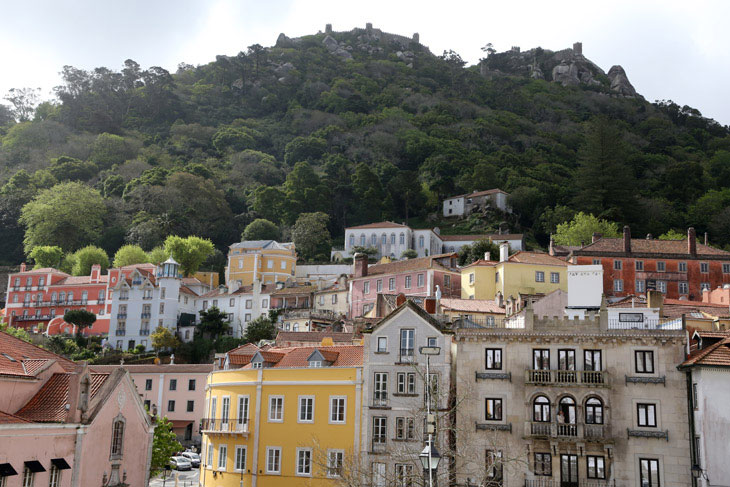
The palace that exists today is a actually a combination of many palaces that have existed on the site since the
10th or 11th century when Sintra was under Moorish rule. Over the years, buildings were replaced, modified, and
added, and almost every king and queen of Portugal spent some time in residence there.
From the front of the palace, you can see the Moorish Castle which we visited on our first trip to Sintra at the
top of the hill.
A model of the palace sits just inside the entrance doors. The tall conical structures on the right are the kitchen
chimneys. They are more than 100 feet tall.
The first room we explored is called The Swan Room. From the 14th through the 19th Centuries it was the place the
court would come together for events like banquets, concerts, and receptions.
Royal audiences would have been held in a room like the one with this magnificent ceiling with paintings of 136
magpies. The room's furnishings would have been probably been limited to a chair, carpet, and canapy.
This room is called the Golden Chamber because it was, at one time, finished in gold. The king would receive
persons of the highest social status here.
The Chapel is the oldest building in the palace. The Church and and the Crown were inseparable in Portugal.
During mass, the king would sit to the side behind a curtain to emphasize that he was superior to everyone
else.
The grandest room of all is the Room of the Coat of Arms. It features the crests of the Portuguese noble
families and tiled scenes of gallantry in the 18th century.
When we visited a woman was working on restoring one of the scenes.
Here are some other pictures taken in the National Palace.
There was also a lovely outside garden.
Visiting the National Palace of Sintra was very enjoyable because the number of tourists was reasonable
so we could take time to appreciate the wall tiles and furnishings. I was glad we took the advice of the
blogger who had suggested visiting the National Palace interior rather than the Pena Palace interior.
After our visit, we decided to have a cup of coffee and a snack at a nearby French-style bistro. As we waited
and waited and waited for the scones we had ordered, we considered our options. It would probably take us
at least 15 minutes to walk up the steep hill the tourist support man had pointed to. On the other hand,
Google Maps told us our next destination - the Quinta da Regaleira was only a 15 minute walk from where we
were sitting. And so we set out.
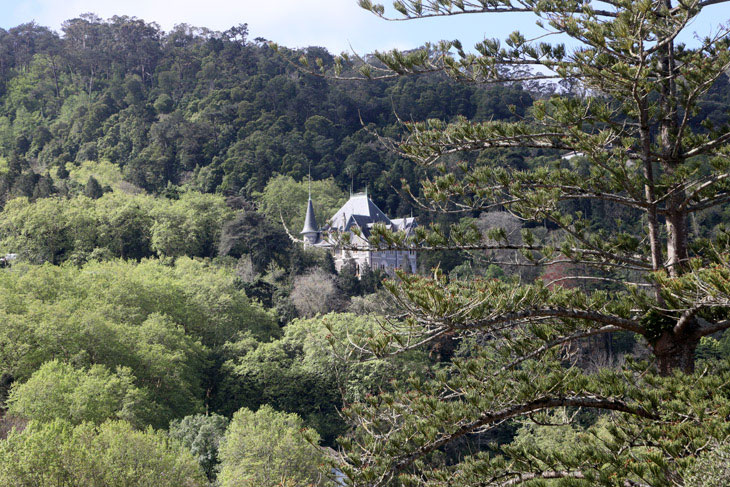
Sometimes when you are traveling on your own in a foreign place you are totally unaware of what is going on around
you.We didn't get very far before a man in a uniform called out to us, "Stop! Stop!" He told us we couldn't go any
further because the road ahead was blocked by a landslide. In retrospect, it had seemed like there
was an unusual amount of large truck activity going on in the square as we sat in the bistro, and perhaps the elusive
435 bus wasn't stopping in front of the palace because it had to detour from its usual route that day.The policeman
told us how to avoid the landslide and get to the Quinta, but we soon encountered another ravine so we backtracked to
the square and waved down a taxi.
The ride was long and circuitous. Most of the roads we took were not much wider than the car, and they were lined
with walls so I don't know how we could have walked on them safely. The driver was a talkative guy who regaled us
with stories as we rode along. We did eventually get stuck in traffic, and I began to wonder how much this ride was
going to cost, but when we finally arrived at our destination, the fare was very reasonable.

There was a crowd of people waiting in line to enter the Quinta, but line moved quickly and we were soon inside
this enchanting place.
The house and other structures may look old, but they were actually built about 120 years ago by a wealthy
eccentric named Carvalho Monteiro and an Italian architect and stage designer named Luigi Manini. Monteiro was
an avid Freemason so the property is full of occult symbols and mystical elements. There is also speculation that
he used the grounds for secret ceremonies and was a member of the Knights Templar.
We wandered slowly among the trees and towers hoping to find the mysterious feature that had drawn us to the place -
The Initiation Well.
Eventually we stumbled upon the exit from the well.
To get to the entrance, we had to climb higher through the grounds past more stone walls and towers.
There was a short line of people waiting to enter the well, but, once again, the line moved quickly. The
Initiation Well is not really a well. It's more like a tower built into the ground. It's exact purpose
is unknown.
I walked carefully down the wet, somewhat slippery steps. Although the well was surely built to arouse
esoteric feelings in those who descended the steps as part of a mystical rite, there were too many people
taking selfies and pictures of each other to arose such feelings on this bright shiny day. I imagine
it would feel quite different lit by torches on a dark night.
There are two main tunnels at the bottom of the well. One leads to an exit and the other splits into
three additional tunnels. The tunnel I chose led to this waterfall and pool.
I finally emerged from the exit we had passed earlier. This is the view of the Moorish Castle from there. The
Moorish Castle is to Sintra as the Castelo De São George is to Lisbon. You catch glimpses of it everywhere.
We wandered slowly down towards the mansion.
A small chapel sits near the main house. In addition to the Christian imagery and statues, masonic symbols
adorn the structure.
The first floor is open to visitors. There were many displays with explanations, but by this point, all I
wanted to do was sit down and rest my weary feet.
If the day had gone as planned, we would have also visited the beautiful Monserrate Palace, but it was
time for us to head back to Lisbon.
I wondered how we would get back to the station, but as it turned out there was no need for concern. As we
walked out the gate, an eager tuk tuk driver approached and asked where we wanted to go. He agreed to drive
us to the station for only slightly more than we would have had to pay for the bus. Then, as as he pulled
away, we looked up and finally saw one of those buses we had been looking for all day.
If we're lucky enough to get back to this part of the world, I would like to spend a couple of days in Sintra
so we could thoroughly enjoy this fascinating town.

